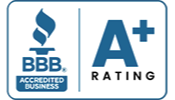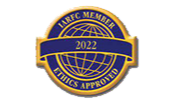Mid-Year Financial Check-In: Are You On Track for Your Retirement Goals?
As we move through the second half of the year, it’s the perfect time to reflect and evaluate where you stand on your path toward retirement. With headlines dominated by inflation, market volatility, rising interest rates, and uncertainty around future tax policy, staying on course can feel more challenging than ever.
A mid-year financial check-in offers a critical opportunity to assess your goals, measure progress, and make necessary adjustments to help ensure you’re on track for the future you envision.
At Agemy Financial Strategies, we understand that life changes, and so do markets, tax laws, and personal circumstances. That’s why we encourage clients and readers alike to carve out time each year, ideally around mid-year, to re-evaluate their financial strategy. Whether retirement is just around the corner or still decades away, the steps you take now can make a world of difference later.
In this blog, we’ll walk through the key areas to review during your mid-year check-in, provide insight into common retirement planning mistakes, and share how working with a fiduciary financial advisor can help you stay aligned with your goals.
The June 2025 Economic Snapshot

As of June 2025, several key economic indicators suggest both opportunities and risks for retirement planners.
U.S. economic growth has slowed significantly, with GDP growth decelerating to around 1.6% year-over-year, down from approximately 2.8% in 2024. The first quarter of 2025 even saw a slight contraction of 0.2–0.3%, driven by increased imports in anticipation of tariffs and persistent inflation. On a global scale, the OECD reports that GDP growth is tracking near 2.9%, with the U.S. outlook appearing especially subdued amid heightened economic uncertainty.
Inflation remains a stubborn challenge, though it has moderated somewhat from the highs of previous years. As of May, the Consumer Price Index (CPI) shows inflation at2.4% year-over-year, with core inflation (excluding food and energy) standing at 2.8%. However, the Personal Consumption Expenditures (PCE) price index, which the Federal Reserve watches most closely, rose sharply to 3.6% in the first quarter, underscoring ongoing inflationary pressures that affect purchasing power and long-term planning.
In response, the Federal Reserve has kept interest rates steady at 4.25–4.50% since March 2025. While markets initially hoped for rate cuts in the second half of the year, the Fed has remained cautious due to the inflationary impact of tariffs and global supply disruptions. As a result, any rate cuts may be delayed until late 2025 or beyond. This “higher for longer” stance on interest rates supports savers with better yields on fixed-income investments, but it also raises the cost of borrowing and puts pressure on growth-sensitive sectors.
The labor market continues to show resilience, but signs of strain are emerging. Job growth figures are increasingly being revised downward, suggesting that the employment picture may be weaker than headline numbers suggest. Economists anticipate that unemployment could rise to around 4.8%by year-end. Still, consumer spending, a key engine of the economy, remains a relatively bright spot, with Deloitte forecasting real personal consumption expenditure (PCE) growth near 2.9% for the full year.
Finally, trade tensions and tariffs remain a major headwind. The April “Liberation Day” tariff initiative caused short-term stock market turmoil, though investor sentiment rebounded after signs that tariff expansion may be slowing. Despite that recovery, ongoing policy uncertainty continues to dampen business investment and fuel inflation, adding further complexity to the Fed’s efforts to navigate a soft landing.
What This Could Mean for Your Retirement Strategy
- Growth is subdued: If your retirement projections assume 3–4% returns, beware, economic growth is likely too weak to support that over the near term.
- Inflation remains sticky: Although cooled from 2024 highs, it continues to erode purchasing power. Your retirement budget should reflect a higher cost-of-living.
- Interest rates might stay higher longer: This benefits savers but increases borrowing costs and could weigh on equity markets.
- Job market softening: Risks to employment and productivity mean your plans should include income buffers or contingency funds.
- Market volatility is real: Tariff-related shocks and geopolitical tensions can trigger sudden corrections. A diversified, long-term investment plan is key.
Why a Mid-Year Financial Check-In Matters

While most people wait until year-end to review their finances, doing a check-in mid-year can provide several advantages:
- Course Correction: If you’re off-track, there’s still time to make changes before the end of the year.
- Tax Efficiency: You can still implement tax-saving strategies to help reduce your liabilities.
- Retirement Alignment: As markets fluctuate and personal situations change, a mid-year review helps ensure your retirement savings stay on pace.
- Behavioral Discipline: Regular reviews promote accountability and reinforce healthy financial habits.
Let’s explore the components of a smart and strategic mid-year check-in.
1. Reassess Your Retirement Goals
Start by asking yourself the most important question: Are my goals still the same?
Your retirement vision may change over time. Maybe you’re now thinking about relocating, starting a business post-retirement, or retiring earlier (or later) than originally planned. Your financial strategy should evolve to reflect these changes.
Consider the following when reviewing your retirement goals:
- Target retirement age: Has it shifted?
- Lifestyle expectations: Are you still aiming for the same standard of living?
- Big-ticket items: Have you added new travel plans, real estate purchases, or health-related costs?
- Legacy goals: Has your desire to leave an inheritance or donate to charity changed?
Once your goals are clarified, you can better evaluate whether your savings rate, investments, and timeline are still appropriate.
2. Review Your Retirement Accounts and Savings Progress
Mid-year is a great time to check how much you’ve saved so far and whether you’re pacing well toward your annual and long-term targets.
Here are key questions to ask:
- Are you contributing the maximum to your retirement accounts (401(k), IRA, Roth IRA, etc.)?
- Have you taken advantage of catch-up contributions if you’re over 50?
- How have your investments performed year-to-date, and are they in line with your expectations?
- Are you taking full advantage of employer matches and tax-deferred growth?
- Are you maintaining a healthy balance between tax-deferred, taxable, and tax-free accounts for future tax flexibility?
If you’re behind on your savings goals, don’t panic; there’s still time to adjust. Consider increasing your contribution rate or reallocating investments to better align with your timeline and risk tolerance.
3. Revisit Your Budget and Cash Flow
Your budget is the foundation of your financial plan. If your spending is outpacing your income, your retirement goals could be at risk. Mid-year is a smart time to re-evaluate where your money is going and identify opportunities to increase savings.
Things to check:
- Are you consistently living below your means?
- Have any expenses increased unexpectedly (e.g., medical bills, home repairs)?
- Are there discretionary expenses you can reduce or eliminate?
- Have you received any bonuses, tax refunds, or windfalls you can redirect to savings?
If you’re not tracking your spending, now is the time to start. Even a basic budgeting app or spreadsheet can give you a clear picture of your financial habits.
4. Assess Your Investment Strategy
Market volatility,inflation, interest rates, and global events all affect how your investments perform and how they should be managed. Review your investment strategy to ensure it reflects both current conditions and your risk tolerance.
Ask yourself:
- Is your asset allocation (mix of stocks, bonds, cash, etc.) still appropriate for your age and goals?
- Have you rebalanced your portfolio this year to maintain your desired risk level?
- Are you diversified enough to protect against downside risk?
- Are your fees (advisory, fund expense ratios, etc.) eating into returns?
For those nearing retirement, sequence of return risk, the danger of poor market performance early in retirement, becomes a serious concern. This might be a good time to discuss a bucket strategy or other income planning techniques with your advisor.
5. Maximize Tax Efficiency

Your tax strategy can have a big impact on retirement readiness, especially if you’re pulling from multiple types of accounts or considering Roth conversions.
Things to review mid-year:
- Are you withholding the right amount in taxes?
- Are you in a low-income year that makes a Roth conversion especially beneficial?
- Have you harvested any capital losses to offset gains?
- Are there tax-advantaged accounts (like HSAs or 529 plans) you should contribute to?
- Are you eligible for qualified charitable distributions (QCDs) if you’re over 70½?
Strategic tax planning throughout the year can help reduce your lifetime tax liability, not just your bill for the current year.
6. Plan for Healthcare Costs
Healthcare is one of the largest expenses in retirement. According to Fidelity, the average 65-year-old couple retiring today will need over $315,000 to cover healthcare costs in retirement, excluding long-term care.
Use your mid-year check-in to plan ahead:
- Are you contributing to a Health Savings Account (HSA)?
- Do you have sufficient coverage for disability or critical illness?
- Have you considered long-term care insurance?
- Do you understand your options for Medicare or pre-Medicare health insurance?
Staying proactive can help prevent healthcare expenses from derailing your retirement plan.
7. Evaluate Debt and Liabilities
Debt can significantly delay or diminish your retirement lifestyle. During your mid-year review, look closely at your liabilities:
- Have you made progress paying down high-interest debt?
- Is your mortgage on track to be paid off before retirement?
- Are you using credit responsibly?
- Are you co-signed on any loans that could become your responsibility?
If debt is holding you back, consider creating a payoff plan or refinancing to more favorable terms.
8. Update Your Estate Plan
Estate planning isn’t just for the ultra-wealthy; it’s a crucial piece of retirement readiness. Mid-year is a great time to revisit your documents and beneficiaries to help ensure everything reflects your current wishes.
Checklist:
- Are your will, trust, and powers of attorney up to date?
- Have you reviewed beneficiary designations on retirement accounts and life insurance policies?
- Do your loved ones know where to find your estate documents?
- Have you considered strategies for minimizing estate taxes or protecting assets for heirs?
Working with a trusted financial planner and estate attorney can assist you in building a plan that helps safeguard your legacy.
9. Check Your Insurance Coverage
Insurance is often overlooked in financial check-ins, but it plays a vital role in helping protect your retirement plan.
Evaluate:
- Life insurance: Do you still need it, or do you need more coverage?
- Disability insurance: Is your income protected if you become unable to work?
- Home and auto insurance: Are you covered adequately?
- Umbrella insurance: Could a lawsuit or major event threaten your assets?
Make sure your coverage keeps pace with your financial situation and goals.
10. Meet With a Fiduciary Financial Advisor
Perhaps the most important step in a mid-year financial check-in is working with a fiduciary advisor; someone legally and ethically required to put your best interests first.
A fiduciary can:
- Help you assess whether you’re on track for retirement
- Optimize your investment and tax strategies
- Identify hidden risks in your plan
- Create a tailored retirement income strategy
- Offer unbiased, client-focused advice
At Agemy Financial Strategies, we’re experienced in helping individuals and families prepare for the retirement they deserve. As fiduciaries, we take a proactive approach to planning, rooted in trust, transparency, and long-term thinking.
Common Retirement Planning Pitfalls to Avoid
Even the most disciplined savers can fall into retirement planning traps. Here are some we often see:
- Underestimating inflation and how it erodes purchasing power
- Not adjusting asset allocation as retirement approaches
- Failing to plan for healthcare or long-term care costs
- Relying too heavily on Social Security
- Ignoring taxes in retirement
- Waiting too long to start saving or seeking professional advice
Avoiding these mistakes can help ensure your retirement is financially secure and personally fulfilling.
How Agemy Financial Strategies Can Help

At Agemy Financial Strategies, we understand that retirement planning isn’t a one-size-fits-all process. It’s a dynamic, evolving journey that must respond to market conditions, personal goals, and changing financial landscapes. That’s why we take a proactive and personalized approach to your financial future.
As fiduciary advisors, we are legally and ethically committed to acting in your best interest. We don’t push products; we create comprehensive, strategic plans tailored to your unique retirement vision. Whether you’re approaching retirement or years away, we help you navigate today’s challenges with confidence and clarity.
Here’s how we support you:
- Customized Retirement Planning: We assess your current financial position, align your investments with your timeline, and help you define a clear retirement income strategy.
- Tax-Efficient Strategies: From Roth conversions to tax-loss harvesting, we look for ways to help reduce your tax burden now and in retirement.
- Risk Management: In times of economic uncertainty and market volatility, we build resilient portfolios designed to help preserve capital while pursuing long-term growth.
- Social Security and Income Optimization: We help determine when and how to take Social Security and structure your income in a way that supports your lifestyle without running out of funds.
- Ongoing Guidance: Financial planning is not a “set-it-and-forget-it” exercise. We conduct regular reviews, adjust strategies as needed, and keep you informed as laws, markets, and your goals evolve.
With inflation still a concern, interest rates at multi-year highs, and global uncertainty influencing every asset class, now is the time to partner with a team that understands the full picture. At Agemy Financial Strategies, we’re not just preparing you for retirement; we’re helping you thrive in it.
Let’s talk about how to strengthen your financial plan for the rest of 2025 and beyond.
Schedule a complimentary consultation.
Final Thoughts: Small Adjustments, Big Impact
Your mid-year financial check-in doesn’t have to be a massive overhaul. In fact, small, intentional changes can make a big difference over time.
Whether it’s increasing contributions, adjusting your asset allocation, or scheduling a conversation with your advisor, each step you take today helps lay a stronger foundation for tomorrow.
Remember: Retirement isn’t a destination. It’s a journey, and like any journey, it requires preparation, navigation, and course correction along the way.
If you’re ready to take your mid-year check-in to the next level, our team at Agemy Financial Strategies is here to help. Let’s work together to build a plan that aligns your wealth with your goals and your retirement with your vision.
Contact Agemy Financial Strategies today to schedule your retirement review and help ensure you’re on the right track.
Disclaimer: This content is for educational purposes only and should not be considered financial or investment advice. Please consult with the fiduciary advisors at Agemy Financial Strategies before making any investment decisions.












